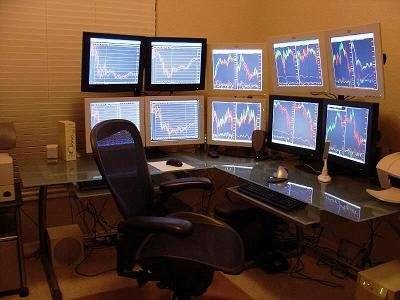TIPS FOR TRADERS What Investors Can Learn from Daytraders
Post on: 16 Март, 2015 No Comment

By: Michael Sincere
Author, Understanding Stocks
Today’s trader is leaner and more focused than in years past, and some of their strategies can work for investors as well, writes Michael Sincere .
With the huge advances in the stock market over the past year and heightened volatility, daytraders are back. Or maybe they never left.
In the 1990s, daytrading was all the rage, especially using risky strategies like scalping, where youre in and out of hundreds of stocks in seconds or minutes, aiming to make small but quick profits.
More recently, scalping is the strategy of choice of high-frequency traders (HFT), the ultimate daytraders, who use high-speed computers to scalp for pennies in nanoseconds. Those pennies can add up to billions of dollars in trading profits every year.
Although retail traders cant compete with these advanced computers, many lone daytraders have returned to the stock market using a variety of sophisticated trading strategies.
Margin and the Pattern Daytrader
One reason that daytraders previously got into financial trouble was because of margin. Margin, the borrowing of funds from your brokerage, is a useful tool if used properly, but dangerous when misused.
At most brokerages, you can borrow up to 50% of a stocks value. For example, if you have $10,000 in stock, the brokerage may lend you an additional $10,000 to buy more shares (thats 2:1 buying power). The Federal Reserve, not your broker, sets the maximum you are allowed to borrow.
You get much more buying power if you are deemed a pattern daytrader, which is anyone who makes more than four day trades within a five-day period. The downside: once designated as a pattern daytrader, you must keep a minimum of $25,000 in your account at all times.
If you are a pattern daytrader, you will probably be allowed 4:1 intra-day buying power, or leverage. For example, if you have $30,000 in your account, you will be given enough buying power to buy a total of $120,000 in securities. This is total for the day, because overnight the margin rate returns to 2:1.
To get around these restrictions, some daytraders only trade part time, although its not easy to stay within the four daytrades within five days rule.
While most people dont have the discipline, time, and guts to day trade full-time, trading part-time can make sense for many people. If used in this way, day trading is just another strategy applied during certain market conditions.

Strict Rules
Although many people tease daytraders for having short-term outlooks, they can teach you a thing or two. To survive, they follow a strict set of rules. For example, rule one is never carry a losing stock overnight (although some daytraders will hold a winning stock for a second day).
Selling a loser is hard for many people, who often hope their stock will come back to even. One way to cut losses or to lock in gains is to use stop losses, especially trailing stops. Trailing stops, which can be entered as a percentage or a dollar amount, adjusts or trails behind a rising stock price.
Example: You buy a stock at $25 and enter a trailing stop order of $1. Every penny that the stock moves higher, the trailing stop increases by one penny. If the stock moves to $27, for example, the trailing stop order tags along, adjusting higher. In this case, if the share price then falls to $26 (down $1), an order is triggered, and becomes a market (or limit) order to sell. You can also set a percentage of 1% or 2%, for example.
Unfortunately, while trailing stops are effective when a stock makes a substantial run, trailing stops may not trigger under extremely volatile conditions. Therefore, if youre aiming for smaller profits, you may want to use hard or mental stops. In addition to a trailing stop order, you should also experiment with trailing stop limit orders.
No matter what you think of daytrading, its clear that many people have learned from the pastwhen unknowledgeable traders quit their jobs and cleared out their 401(k)s to day trade. Many modern daytraders trade less frequently, and are choosier about the buys and sells they make.
Michael Sincere (www.michaelsincere.com ) is the author of Start Day Trading Now (Adams Media, 2011), Understanding Options (McGraw-Hill, 2006), All About Market Indicators (McGraw-Hill, 2010), and Understanding Stocks (McGraw-Hill, 2003).














